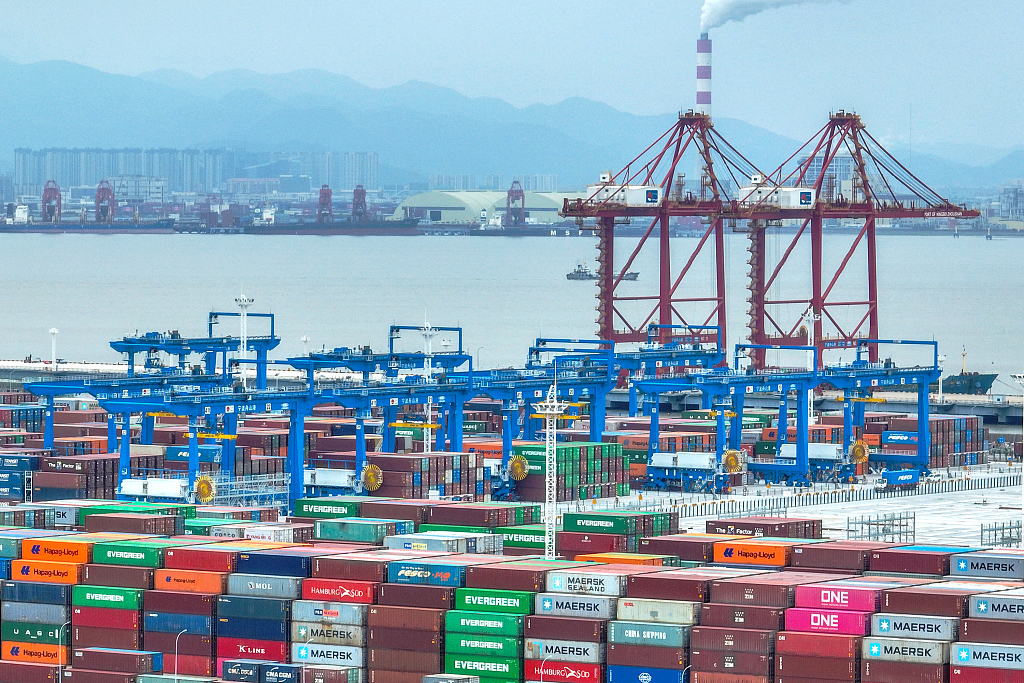Despite trade hurdles, nation still outperforming expectations


Despite increased uncertainty in the external environment, China's foreign trade continued to show strong resilience in 2023, with total imports and exports reaching 41.76 trillion yuan ($5.81 trillion), up 0.2 percent year-on-year. In order to further promote the recovery of both the world and China's economy, this year the country should ramp up efforts to strengthen its endogenous driving forces for foreign trade.
Foreign trade
Since the beginning of last year, multiple negative factors have been interfering with China's foreign trade. The fragmentation of global industrial chains and logistics, which was mainly caused by the COVID-19 pandemic, has continued to increase. Meanwhile, the protracted Russia-Ukraine crisis has caused frequent fluctuations in global commodities prices. In addition, the United States and many other developed countries have sought to "decouple" from China in terms of trade and science, so as to hinder the country's development.
Instead of being dragged down by such an unfavorable scenario, China has found its way out and made foreign trade recover stably in 2023. The country's total imports and exports reached 9.69 trillion yuan in the first quarter and exceeded 10 trillion yuan in all three following quarters. December alone witnessed 3.81 trillion yuan in two-way trade value.
China's foreign trade operators, mostly private enterprises, are full of vigor and vitality as some 556,000 private enterprises contributed 22.36 trillion yuan to foreign trade, up 6.3 percent year-on-year and accounting for 53.5 percent of the country's total trade value.
Meanwhile, China has striven to deepen cooperation with all its trading partners since last year. Its imports and exports with countries and regions involved in the Belt and Road Initiative amounted to 19.47 trillion yuan, a year-on-year increase of 2.8 percent. Total foreign trade volume with Latin America and Africa expanded by 6.8 percent and 7.1 percent, respectively, to 3.44 trillion yuan and 1.98 trillion yuan. The country's trade with the European Union and the US gradually picked up in the fourth quarter.
In addition, the country has accelerated technological development and thereby enhanced the competitiveness of its featured products, continuously injecting fresh impetus into foreign trade. Some 1.06 trillion yuan in "new three" products — photovoltaics, lithium-ion batteries and new energy vehicles — were exported from China, up 29.9 percent year-on-year. The export growth of ships and household appliances reached 35.4 percent and 9.9 percent, respectively.
Although China still witnessed a slight decline in its imports last year, the country's domestic demand has gradually recovered and imports of bulk commodities, especially everyday goods, are expanding in an orderly manner. Total imports of energy, metal ores and grains increased by 15.3 percent.
Opening-up
The stable and sustainable growth in China's foreign trade last year was mainly due to its high-standard opening-up, especially high-standard institutional opening-up.
The country continued to accelerate the construction of pilot free trade zones last year, expanding their total number to 22. In addition, in accordance with international standards, the State Council — China's Cabinet — issued a document in June to further promote institutional opening-up among FTZs.
Imports and exports in FTZs reached 7.67 trillion yuan, up 2.7 percent year-on-year. Since their establishment, FTZs have so far made 278 institutional innovation achievements, which cover a wide range of sectors including investment facilitation, trade facilitation and financial innovation and liberalization.
Meanwhile, China is well poised to bolster the healthy development of emerging industries and innovative business models concerning foreign trade. The country's cross-border e-commerce imports and exports grew by 15.6 percent to 2.38 trillion yuan last year. There has also been a significant surge in other emerging industries, such as comprehensive foreign trade services, offshore trading and overseas warehouses.
Relevant government agencies have carried out comprehensive reforms targeting the regulation of emerging industries, based on their different development trends and characteristics. A series of efficient and high-quality services have been provided to support such industries' development as well.
High-level free trade agreements have also contributed to China's foreign trade by lowering trade barriers and providing more development opportunities for foreign trade enterprises. The Regional Comprehensive Economic Partnership agreement, for example, helps reduce costs for regional trade and strengthen connections among industrial and supply chains. China's imports and exports with the other 14 signatory economies had already reached 12.6 trillion yuan by the end of last year.
Driving forces
To consolidate last year's achievements and take them to the next level, China must continue to strengthen endogenous driving forces for foreign trade, with further efforts in four major areas.
First, China needs to empower the high-quality development of foreign trade through digitalization. It should promote the application of digital technologies in the whole process of foreign trade, as well as in relevant emerging industries. Traditional foreign trade enterprises can add new sales channels and expand their brand awareness after digital transformation. Large enterprises will be able to build their own digital platforms. When it comes to micro, small and medium-sized enterprises, comprehensive digital solutions will be provided by third parties.
Second, the country needs to optimize the development environment for emerging industries concerning foreign trade. On the one hand, China should adopt a regulatory approach appropriate to these industries and provide them with high-quality financial services. On the other hand, it must strengthen international cooperation and exchanges related to intellectual property rights protection and cross-border logistics. Finally, a complete early warning system should be put in place to effectively deal with unreasonable trade restrictions.
Third, high-standard institutional opening-up should be further promoted across the country. Governments at all levels must spare no effort to upgrade FTZs and continue to remain aligned with high-level international economic and trade rules such as the CPTPP and the Digital Economy Partnership Agreement.
Fourth, the security of both industrial and supply chains should be fully ensured. To cope with "decoupling" by some Western countries, China should further bolster technological innovation and thereby construct a modern industrial system, which will not only contribute to the stability of global value chains, but also consolidate the development gains from economic globalization.
This op-ed is a translation of an article first published in China Economic Times. The writer is a professor at the School of Economics, Renmin University of China.
The views do not necessarily reflect those of China Daily.




































